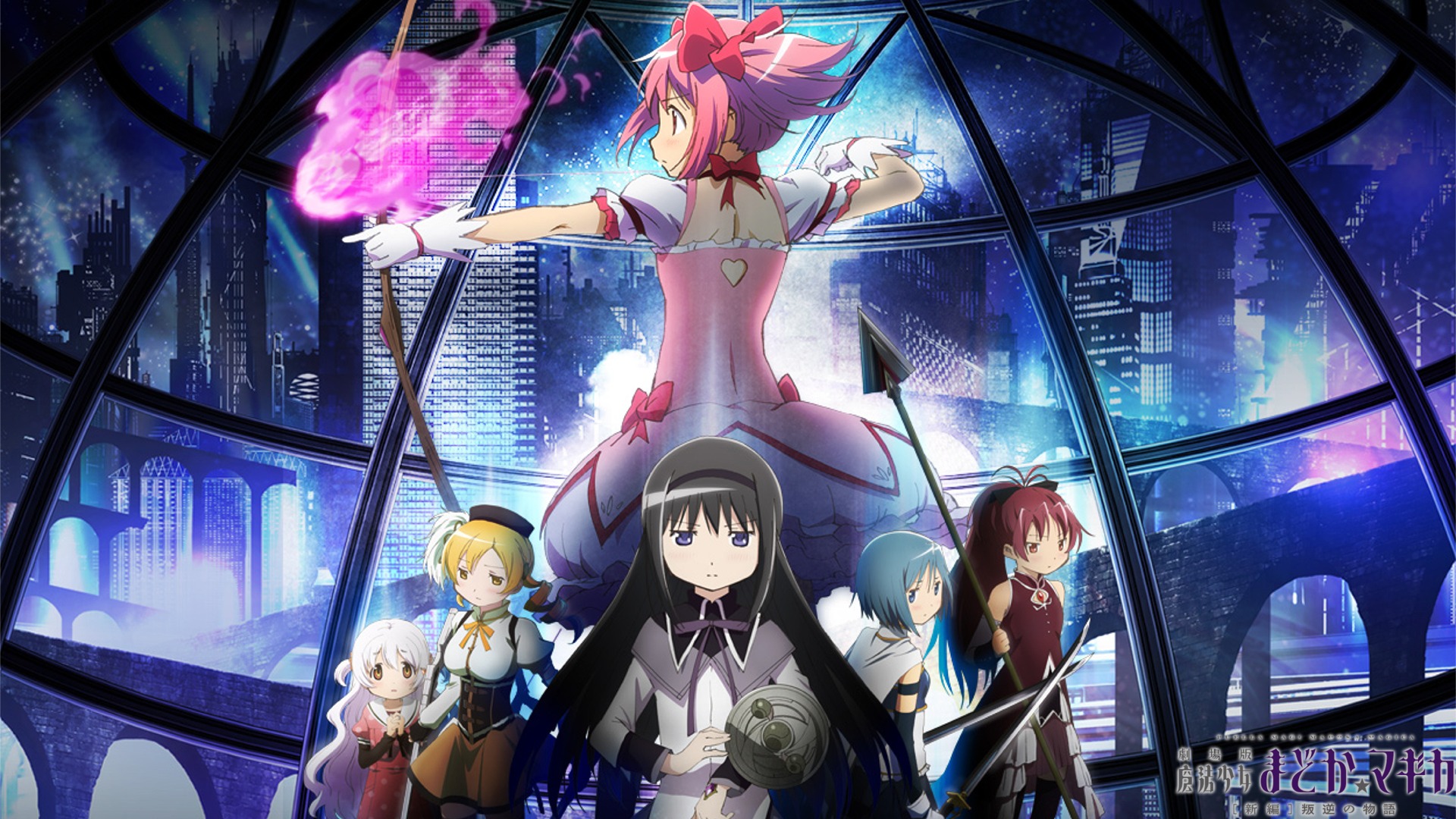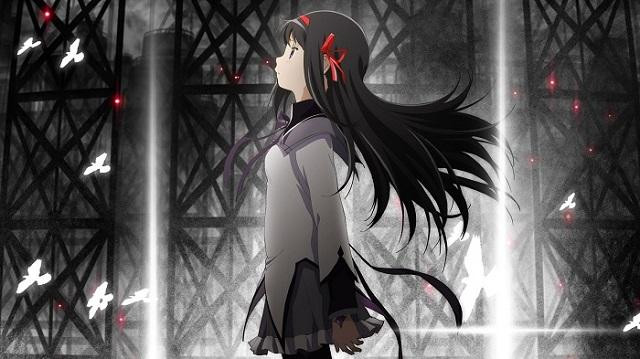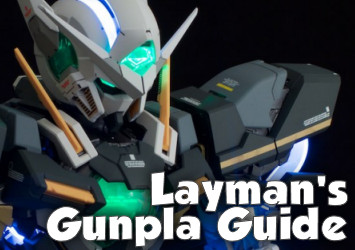
(Note: This post contains HEAVY spoilers and is mostly intended for people who have seen the movie, especially those who are confused about it.)
When I first heard that the third Madoka movie was going to have "all five girls together for the first time" I got worried. Quite a bit worried, actually. See, the thing about Mahou Shoujo Madoka Magica the show (and also the first two movies) was that it forewent many things you would expect to see in a magical girl franchise, most notably the main character as a magical girl. I was afraid that instead of trying to further explore the story they laid out (a task that I saw as nearly impossible, but more on that later) they would opt for a more standard narrative. Something like a separate timeline where all 5 girls are living happily together fighting witches or wraiths or something similar.
Well, after finally having seen Hangyaku no Monogatari (Rebellion Story) I am happy to report that the best thing about it is that they didn't do that. In the conceptual realm, this was a perfect sequel – it both dove right into the complexities and abstractions that were introduced in the previous movies, and transitioned the franchise to a point where more sequels make total sense and would have a clear narrative purpose. They didn't wuss out here, and that deserves a lot of respect.
I have a lot to say about this film, and I want to start with a bit of a plot summary. Much like my recent post on Kyousougiga, I have seen a lot of confusion about what exactly happened, and therefore I will try to clear up some of that confusion, which will also make my subsequent points clearer.
NOTE: I cannot commit to the 100% accuracy of everything I write below. This is just the way I understood things based on a single viewing and some post-viewing discussions.
So What The Hell Happened?
Let's go back to the previous films for a second so I can lay some proper groundwork:
The show (or first movie) begins in what I will now call Universe 0 – the "original" universe. In this universe, magical girls fight witches, who are themselves magical girls whose soul gems became grief seeds because they got too tainted. This process birthed more energy into the universe to fight entropy. At the end of the show (or the second movie), Madoka finally decided to become a magical girl, but her wish changed everything. Madoka's karmic impact was enormous due to Homura repeatedly traveling back in time to try and save her, which linked Madoka's karma across several timelines. This meant that her wish would be very powerful. Madoka wished to become the one that cleansed every magical girl's soul gem for the last time, enabling them to die peacefully instead of turning into witches. This change was so fundamental that it rewrote the entire universe and gave birth to Universe 1. In this universe Madoka acts as a force of nature (called "The Law of the Cycle"). This is a bit hard to explain but think for a second about gravity – it is a physical force that we know operates on everything, but we don't know how. In Universe 1, soul gems that are about to become fully tainted are somehow cleansed at the last second, enabling the magical girl to die peacefully (Madoka does this, but the inhabitants of Universe 1, except for Homura, aren't aware of her existence). Instead of witches, curses in this universe come from an outside source called Wraiths.
This is the point where the third movie picks up. In Universe 1, the Incubators (Kyuubey's race) decide to study the Law of the Cycle and understand its mechanics. To do this they build a trap – they take a magical girl who is on the verge of death (in this case, Homura) and trap her tainted soul gem inside a force field, which prevents it from being cleansed by the Law of the Cycle. They are trying to capture this force inside their enclosed field and study it (the field lets things in but not out).
And indeed, the force that was Madoka enters the field to cleanse Homura's soul gem and becomes trapped inside, but she doesn't come alone. She brings two former magical girls with her – Sayaka and Nagisa (who was the witch Bebe that killed Mami in Universe 0). Presumably after death, the magical girls become one with the abstract Madoka entity (We are shown at the end of Movie 2 that Sayaka died fighting Wraiths in Universe 1). They are there to monitor Madoka and make sure she does not lose her memories of her true self. Inside the field, Homura has created a fantasy world where all five girls live happily together and combat Nightmares, which appear to be beings that, as the name implies, give people nightmares. (Note: This means that the movie actually got away with having some of those "standard" magical girl scenes I mentioned above without actually making it the entire story, which is pretty clever).
By process of elimination, the Incubators figure out that the girl Madoka must be the human embodiment of the Law of the Cycle, since she is the only one that there is no record of having ever existed in the outside universe (she doesn't exist as a person in Universe 1, only in Universe 0).
So Homura finally figures out that she is the one who created the enclosed world and becomes a witch (or so we think). The other girls fight her and eventually manage to break out of the enclosed world. Madoka is finally ready to cleanse Homura and let her die (which they imply will make Homura part of the abstract Madoka, just like Sayaka and Nagisa). However, Homura did not become a witch. It wasn't despair and grief that tainted her soul gem. Remember the karmic impact that stretched across the timelines, thereby giving Madoka incredible power? The same thing happened with Homura but in the reverse. Homura wasn't driven by despair but rather by her love for Madoka. She became obsessed with rescuing her and giving her a normal life, and the multiple timelines compounded this tainting effect. It's also implied that the fact her soul gem was trapped inside the force field acted almost like a pressure cooker, making the effects even stronger. Homura grabs Madoka at the last second and tears a part of her away – the part that used to be the girl Madoka. Again the universe is rewritten and we enter Universe 2. Homura decided that she would grant Madoka a normal happy life at all costs, even if Madoka herself claims that she doesn't want it. She traps the girl Madoka in Universe 2, causing her to forget her true form. Because of the selfishness of this act, Homura defines herself as the devil of this universe, since she is working against God (Madoka). The other girls are also in Universe 2, and at the end of the movie it is shown that they are losing their memories of Universe 1 as well. In one of the final scenes, Madoka begins to remember her true self, but Homura quickly distracts her. However, in the ensuing conversation, Madoka says that she is opposed to people arbitrarily changing the rules, to which Homura replies that because of this, Madoka might one day become her enemy.
Presumably as the story continues, Sayaka, and later Madoka herself, will fight Homura in order to restore Universe 1 and return Madoka to her true form. Homura has become consumed by her own desire of making Madoka happy at all costs, but her idea of Madoka's happiness no longer depends on what Madoka actually wants, but rather on Homura's own notions of what is good for her.

Thoughts
As I said above, I was very afraid that this was going to be more of a standard side story that would potentially ignore many, or even all, of the events of the past simply to tell a more fan service-oriented Madoka story. I was delighted to have been wrong about that. This is exactly what I think a Madoka story should feel like. It dove deep into the abstract and created a very interesting contrast between Madoka's arc in the show and Homura's arc in this movie. While Madoka's drive for altruism resulted in her becoming an abstract notion of altruism, Homura's altruism mutated into a selfish egoism. It was no longer about Madoka being happy. It was about Homura making Madoka happy. Some people might say that Homura is the devil of Universe 2 (in the movie she used the word Akuma, which can mean both demon and devil), but I feel like it was more of a self-imposed negative title. Homura can certainly be considered the God of Universe 2 in the way that Madoka could be seen as the God of Universe 1, but Homura seems to be aware that she is motivated by her own selfish desires now, and hence refers to herself by that moniker.
In this sense, this movie does something that I always look for – they give the "villain" proper motivation. Homura is indeed motivated by selfishness, but it isn't a desire for world domination or ultimate power. Her selfish desire is to make someone else happy. It's just that this desire slowly drowned out the own desires of that person so that they no longer mattered. The only thing that matters to Homura is what she herself thinks a happy life for Madoka should be like.
I know that there are plans to continue this franchise onward, and before seeing this movie I was a bit disappointed because it sounded like they were trying to milk an already completed story. However, this movie very cleverly transitioned the franchise into a place that screams for a sequel. Homura is now the villain, trying to preserve the integrity of Universe 2 at all costs, and Sayaka, despite having begun to lose her memories, still seems set to begin pushing back against Homura's plan. It creates an interesting new inter-character dynamic and a story that doesn't feel like a repeat of what has already been done.
I'm sure many people won't like this movie, but I really have to give it a lot of credit for managing to expand this universe (universes) in a way that made sense and fit the general vibe of the story. In true Madoka fashion, this movie ends on a very dark note – Madoka has forgotten her true self, and the girls are all trapped in Universe 2, with the God (Devil) Homura willing to do anything to maintain its status quo. So after being disappointed to learn that the franchise would continue, I am now eagerly awaiting the next chapter in this story.
I scored the show a 10. Due in large part to its conceptual boldness and strength, I give Rebellion Story a 9.







